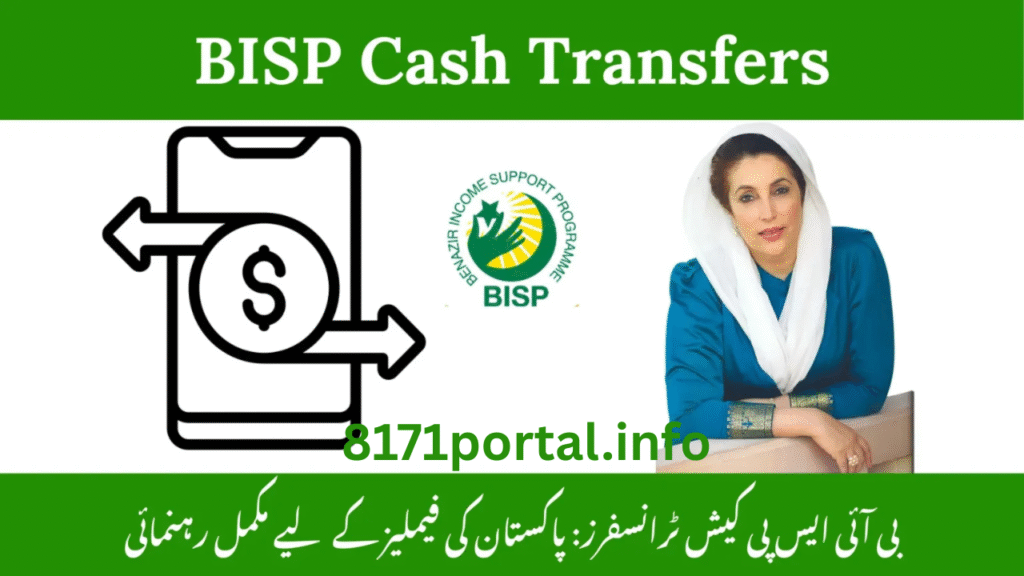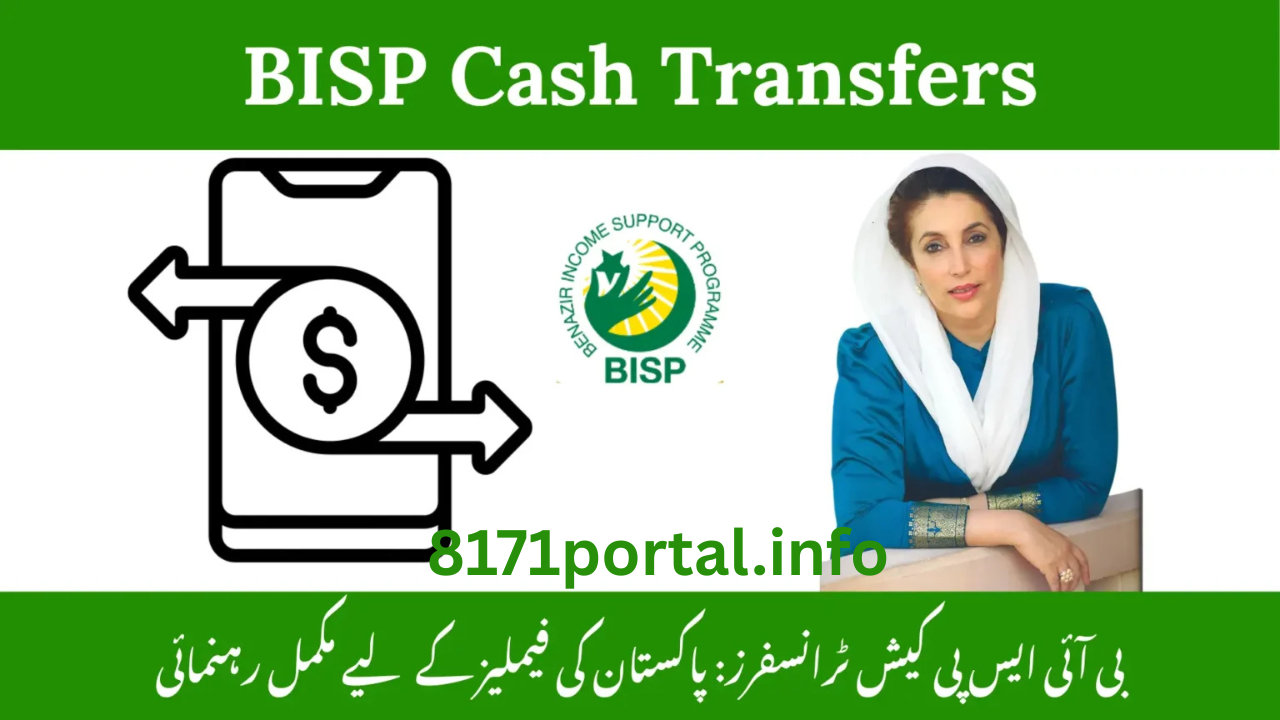The Benazir Income Support Programme BISP Cash is a federal government initiative that provides unconditional BISP Cash transfers to millions of low-income and vulnerable families across Pakistan. Its primary objective is to provide financial support, reduce poverty, and empower women by making them the direct recipients of the funds. If you are struggling to make ends meet, this program is designed to offer a financial safety net for your household. This guide will walk you through everything you need to know, from eligibility to collecting your funds. 🤝
Understanding the BISP Program: More Than Just BISP Cash
Launched in 2008, BISP cash has grown into one of the largest social safety net programs in South Asia. It’s not just about providing temporary relief; it’s a strategic investment in human capital. By transferring money directly to women in eligible households, the program aims to:
- Reduce Extreme Poverty: The quarterly stipend helps families afford basic necessities like food, shelter, and medicine.
- Promote Women’s Empowerment: By designating the woman of the household as the recipient, BISP increases her financial agency and decision-making power within the family. 💪
- Encourage Human Development: Linked initiatives, like the Waseela-e-Taleem (Education Conditional BISP Cash Transfer), provide additional funds to families who send their children to school, breaking the cycle of poverty.
The program is a cornerstone of Pakistan’s social protection strategy and is widely recognized by international institutions like the World Bank for its scale and impact.

Am I Eligible? How to Check Your BISP Cash Status
Eligibility for the BISP program is determined through a rigorous, objective process to ensure support reaches the most deserving households. The primary tool for this is the Proxy Means Test (PMT), a statistical model that estimates your family’s economic status based on various indicators.
Key Eligibility Criteria (PMT Factors):
- Household composition and number of dependents
- Employment status and sources of income
- Ownership of assets (e.g., land, vehicles, livestock)
- Quality of housing (e.g., construction material, access to utilities)
- Education levels of household members
How to Check Your Eligibility Status in 2024:
This is the most common question, and it’s simpler than you might think! You do not need to visit an office first.
- SMS Your CNIC Number: Take the CNIC of the woman who is the potential head of the household.
- Send it via SMS to 8171. This is the official BISP helpline number. 📱
- You will receive an automated reply instantly stating whether your family is eligible and registered in the program.
👉 Important Note: If your PMT score is below the poverty threshold, you will be deemed eligible. If not, you will receive a message stating you are not currently eligible.
The Registration Process: How to Enroll in BISP
If you are not registered but believe you meet the criteria, here is the process:
- National Socio-Economic Registry (NSER) Survey: Registration is done through a comprehensive survey conducted by BISP teams. These teams visit areas across the country to collect household data.
- Provide Accurate Information: When a survey team visits your area, you must provide complete and accurate information about your household’s socio-economic condition. This data is what feeds into the PMT model.
- Verification: After the survey, your data will be verified and processed. You can check the outcome later via the 8171 SMS service.
⚠️ A Word of Caution: The registration survey is free of cost. Be wary of anyone asking for money or a “fee” to register you. This is a scam. Report such individuals to the nearest BISP office or via the helpline.
Receiving Your Funds: Payment Methods Explained ✅
Once registered, receiving your BISP Cash transfer is straightforward. BISP has evolved from manual disbursements to more efficient systems.
- BISP Kafaalat Card (Debit Card): This is the most common method. Eligible women receive a biometric debit card from partnered banks (like HBL or Bank Alfalah). You can withdraw BISP Cash from designated ATMs or authorized bank camps set up on payment dates.
- Bank Transfer: In some cases, funds are transferred directly into a designated bank account.
- Biometric Verification: To collect your money, whether at an ATM or a payment point, you must verify your identity through thumbprint biometrics. This ensures the rightful recipient collects the funds and reduces fraud.
Payment Schedule: BISP Cash payments are typically made quarterly. The exact dates are announced by BISP Cash through official channels and local media. You can also check payment dates by sending your CNIC to 8171.
Beyond the Stipend: Other BISP Cash Initiatives
BISP is more than just the Kafaalat stipend. It includes several linked programs:
- Waseela-e-Taleem (WeT): Provides additional BISP Cash incentives for families to enroll and keep their children (aged 4-12) in school.
- BISP Nasha Mukti Program: Offers financial assistance and support to families affected by drug addiction.
- Taleemi Wazaif & Undergraduate Scholarships: Provides scholarships to students from BISP-eligible families to pursue higher education. 🎓
Conclusion: Navigating Your BISP Journey with Confidence
The Benazir Income Support Programme is a vital lifeline for millions of Pakistani families, offering more than just financial aid—it provides stability, opportunity, and a path toward greater empowerment. 🤲 Navigating any government program can feel daunting, but by understanding the eligibility process, knowing how to use the 8171 SMS service, and being aware of the various initiatives available, you can confidently access the support your family deserves. Remember, the key is to use official channels, be patient with the process, and never pay for a service that is meant to be free. Stay informed through BISP’s official announcements, and take that first step by sending your CNIC to 8171 today.

Frequently Asked Questions (FAQs) ❓
1. How much money is given in the BISP Kafaalat program?
- The stipend amount is not fixed and can be increased by the government. As of recent cycles, the quarterly payment is Rs. 10,500 per eligible family. Always check the official BISP website or 8171 for the latest amount.
2. I sent my CNIC to 8171 but got no reply. What should I do?
- First, ensure you typed the 13-digit CNIC number correctly without dashes. If there’s still no reply, there might be network congestion. Try again after some time. If the problem persists, visit your nearest BISP Tehsil Office for assistance.
3. My eligibility status says “Not Eligible.” Can I appeal this?
- Yes. If your economic situation has drastically changed (e.g., death of a breadwinner, major illness, loss of property), you can request a re-survey at your nearest BISP Tehsil Office. You will need to provide proof of your changed circumstances.
4. I lost my BISP debit card. How do I get a new one?
- You must immediately block your lost card by contacting the helpline of the partner bank that issued it (e.g., HBL or Alfalah). Then, visit your nearest BISP office with your original CNIC to request a replacement card. There is usually a small fee for card re-issuance.
5. Why is my biometric verification failing at the ATM or camp?
- This is often due to worn-out fingerprints, which is common for people who do manual labor. Try moisturizing your hands or cleaning the scanner. If it continues to fail, you will need to visit the partner bank’s designated branch with your CNIC to resolve the biometric issue.
6. Are there any fees for receiving the BISP payment?
- No. The entire amount sent by BISP is yours. Agent camps and banks are not allowed to deduct any fees. However, some ATMs might charge a minimal transaction fee if you withdraw from a machine that is not from your card’s specific bank.
7. How often are the payments made?
- Payments are made on a quarterly basis (every three months). The schedule is not fixed on a calendar date, so it’s important to check for official announcements via SMS on 8171 or in the local media.
8. Can a man from the family collect the money?
- No. The money is exclusively for the registered female beneficiary. She must be present for biometric verification to receive the funds. This is a core design principle of the program to ensure women’s financial inclusion.
9. What is the difference between BISP and the Benazir Kafaalat program?
- BISP is the overall umbrella organization (the Benazir Income Support Programme). Benazir Kafaalat is the specific program under BISP Cash that deals with the unconditional cash transfers we’ve discussed in this guide.
10. How can I update my mobile number or address in the BISP Cash record?
- You must visit your nearest BISP Cash Tehsil Office with your original CNIC to request an update in your registered information. This cannot be done via SMS.
11. Is the BISP Cash program only for certain provinces?
- No, the BISP Cash is a federal program and operates across all provinces and regions of Pakistan, including Punjab, Sindh, KPK, Balochistan, AJK, and Gilgit-Baltistan.
12. What is the purpose of the BISP Cash Dynamic Registry?
- The Dynamic Registry is an ongoing process where NSER data is continuously updated. This allows families who were previously ineligible to be added if their economic status declines, and conversely, families that have improved their status can be graduated out, ensuring funds reach those who need them most.
13. I am a widow/disabled. Do I get priority?
- While being a widow or having a disabled member in the household is a significant factor in the PMT scoring model, it does not guarantee automatic eligibility. The overall household economic score is the final determinant.
14. Where can I file a complaint about a problem?
- You can file complaints through the official BISP helpline (0800-26477), by visiting a BISP Cash office, or through the complaint portal on the official BISP Cash website (
https://bisp.gov.pk).
15. Has the payment amount increased for 2024?
- Stipend amounts are subject to change based on government decisions and budget allocations. Always confirm the current amount by sending your CNIC to 8171.
16. What documents do I need for registration?
- The most important document is the Computerized National Identity Card (CNIC) of the female head of the household. The BISP Cash survey team will collect all other necessary data during the NSER survey.
17. How long does it take to start receiving payments after registration?
- There can be a significant delay (several months) between the NSER survey and the first payment. This is due to the time required for data processing, verification, and the inclusion of new beneficiaries in the next payment cycle.
18. Can I check my BISP Cash balance online?
- There is no dedicated BISP Cash online portal for beneficiaries. The primary and most reliable method is to use the 8171 SMS service for all information, including eligibility and payment confirmation.
19. What does the message “Your payment is being processed” mean?
- This means your funds have been authorized and are in the pipeline for disbursement. You should receive another SMS shortly informing you of the exact payment date and location.
20. Is there an age limit for the female beneficiary?
- The registered woman must be at least 18 years old and possess a valid CNIC. There is no upper age limit.
